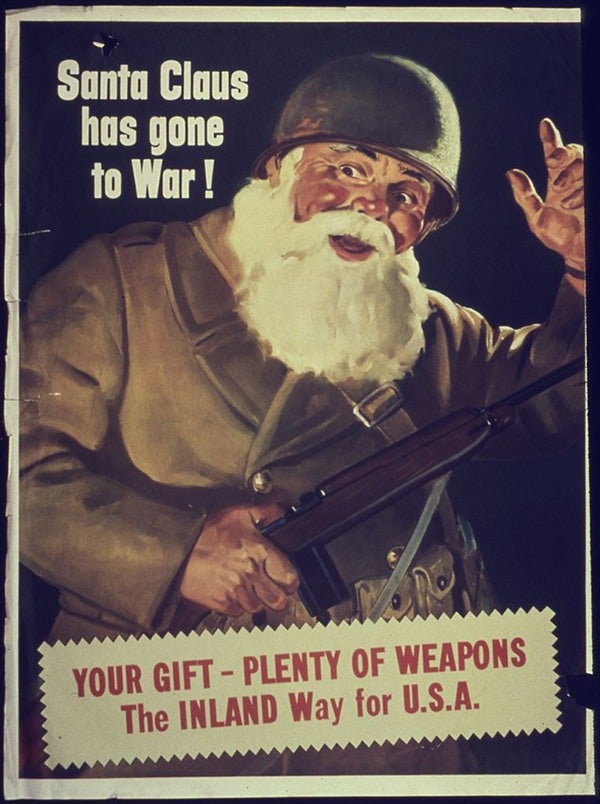The first black Santa Claus at the Mall of America has upset some people, who took to social media to insist that “Santa is white.” It might be time to look into the mythological/fictional character of Mr. Claus, called by John Schlien a genuine American “folk hero,” and by all counts, a rather extraordinary mash-up of influences.
Santa’s a distinctly American creation, emerging from the Catholic hagiography of the fourth century martyr Nicholas of Myra, American Protestantism (and its business ethic), and the Victorian creation of Christmas as we now know it. Add the Nordic Father Christmas, who has roots in the pre-Christian celebration of winter solstice, stir, and voila!
It all started with Nicholas, a Greek bishop in what is now Turkey. He became the patron saint of children; his feast day on December 6th or 19th, depending on whether one follows the Orthodox or modern calendar. St. Nicholas/Father Christmas was transformed into Sante Claus in the U.S. by the early 1820s by writers like Washington Irving, who celebrated the Knickerbocker heritage of the Dutch colony of New Amsterdam. “Sante Claus” comes from the Flemish name for St. Nicholas, Sinterklaas.
The “jolly old elf” really got his persona going in the 1823 poem, “A Visit From St. Nicholas,” better known as “The Night Before Christmas.” This still-popular poem was published anonymously and is usually attributed to Clement Clark Moore. Moore was an Episcopal theologian and professor of Greek and Latin with a side-gig developing Manhattan’s Chelsea neighborhood. He represented the wealthy New Yorkers who turned American Christmas into a family and children-centered holiday instead of the sometimes rowdy open-air (and inside-tavern) communal celebration it had been.
Thomas Nast’s famed illustrations of the plump, bearded, round-cheeked, jovial fellow baring gifts from the 1860s on helped cement the “look” of Santa (and Nast may have been the first person to make the North Pole connection in print). Nast, of German heritage, threw in some of the German version of Sankt Nikolaus to what some have called the “official portrait” of Santa.
But the red-suited, fur-lined version we know now really became prominent in the 1930s, when the Coco-Cola Co. used this figure in its advertisements. There’s no copyright on the idea of Santa, of course. And since he is so well-known to the youngest consumer demographic, many businesses have used him to push product. (These two public heath professionals think Santa Claus should be considered a public health pariah because he has been so often used to sell sugar and other junk foods.)
Perhaps this jolly white Santa Claus lifted from an advertisement isn’t so sacred after all? The actor George Takei, who was imprisoned as a child because he was Japanese American, noted that in his internment camp, Santa was played by an Asian.












